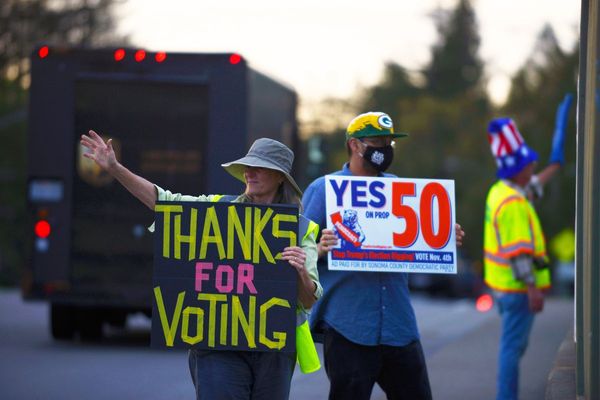
Does the Albanese government believe in evidence-based policy? It claims to. It established the Australian Centre of Evaluation to return evaluation to the policymaking process. Its ranks contain Andrew Leigh, an ardent advocate for evidence-based policymaking and randomised trials in public policy.
On health policy and particularly vaping, however, that goes out the window. What we have instead is policy guided by conspiracy theory.
Last year Labor banned e-cigarette sales from anywhere other than pharmacies — which opposed the ban — via prescription. Then, three months later, it put in place laws to provide for tightly regulated non-prescription sales by pharmacists to adults. Why? Let Health Minister Mark Butler explain, as he did in December at a “symposium” for the “illicit tobacco and e-cigarette commissioner”, a new role Labor created with a $400,000 salary because, apparently, there aren’t enough highly paid health bureaucrats.
Butler’s narrative is about how e-cigarettes, marketed as a “harmless” aid for quitting smoking, have been used by Big Tobacco to lead children into smoking, leading to an “explosion” of recreational vaping.
Over those years … vape stores started opening … Nine out of 10 of them were opened in walking distance of schools because they knew that that was their target market … Health authorities right around the world were being told these things were far from harmless. In and of themselves, they contain about 200 different chemicals … we’re starting to get research pretty regularly now, about the different health harms that vaping is causing … Early studies, but studies pretty quickly started to put to bed this myth that vaping was harmless. Of course, the real harm is that this is a gateway to cigarettes. And that was always the intention of Big Tobacco. That’s why they put these things into the marketplace … Tragically, it’s working. The only cohort in our community now where cigarette smoking rates are going up are the youngest Australians, very, very young adults.
Scary stuff — if it were true.
Let’s take Butler’s “marketed at kids” angle. Vape use — primarily black market disposables rather than the reusable devices long used by ex-smokers — certainly has increased significantly in recent years, especially during the pandemic, though there is some evidence that growth plateaued in 2023.
But if Big Tobacco is marketing at kids — tobacco companies didn’t develop e-cigarettes and only entered the market a decade ago by buying into e-cigarette manufacturers — they’re not doing it very successfully. According to long-time public health academic and veteran anti-smoking GP Colin Mendelsohn, drug use surveys show the vast majority of e-cigarette users — nearly 95% — are adults.
What Butler fails to mention is that at the same time as the recent surge in vaping, traditional smoking has also seen a big decline. Between 2019 and 2023, according to the National Drug Strategy Household Survey (NDSHS), there was a big fall in the number of people who smoked daily, from 11% to 8.3% — or from 2.3 million to 1.8 million people. The number of occasional smokers also fell noticeably.
This gets to the point behind the vaping hysteria: the majority of users are ex-smokers, usually older adults, who want to remain ex-smokers. Butler’s claim about how harmful e-cigarettes are is a complete strawman. Contrary to his repeated claims, no-one has ever claimed vaping is harmless. The point is it is substantially less harmful compared to traditional smoking, both to the user and those who are exposed to second-hand smoke (in the case of second-hand nicotine exposure, a more than 80% reduction, and a 100% reduction in combustion toxicants). More people vaping and fewer people smoking is a big win for public health.
This is why the UK National Health Service tells Britons “nicotine vaping is substantially less harmful than smoking. It’s also one of the most effective tools for quitting smoking,” adding that “in the short and medium term, vaping poses a small fraction of the risks of smoking”.
But what about the “gateway” claim from Butler? Again, if vapes are a sinister Big Tobacco plot to lure kids, or anyone else, into smoking, it’s a spectacular failure. According to the NDSHS, the number of Australians who have never smoked surged to a new high in 2023 of 65.4%, well up on 63% in 2019. The number of kids who’ve never smoked rose to 97.5% from 96.6%. And the number of 18-24-year-olds — theoretically the targets of that Big Tobacco conspiracy over the past decade — who’ve never smoked rose from 79.6% to 83.3% (the number of daily smokers in that age group also fell a staggering 34% between 2019 and 2023).
Despite the discredited claims cited by Butler, the only thing vaping seems to have been a gateway to is people not smoking — which is what more sensible and evidence-based health systems in other countries treat it as.
Problem is, that’s exactly what is at risk from Butler’s and the anti-smoking lobby’s prohibition-based approach, which uses overblown claims about the harms of youth vaping to curtail access for Australian adults trying to ensure they never return to smoking.
Legitimate GPs were reluctant to prescribe vaping to patients after prohibitions in 2021; chemists are reluctant to sell vapes to customers; vapers are reluctant to go to chemists to purchase e-cigarette materials. The result, as Dr Alex Wodak pointed out last year, is “over 90% of Australians vaping at present obtain their requirements from the black market”.
That black market is already surging in response to Butler’s latest changes. Between greater crime and poorer health outcomes, it’s a testament to how damaging abandoning evidence-based policy can get.
Is Labor’s vaping policy needed? Write to us at letters@crikey.com.au. Please include your full name to be considered for publication in Crikey’s Your Say. We reserve the right to edit for length and clarity.







